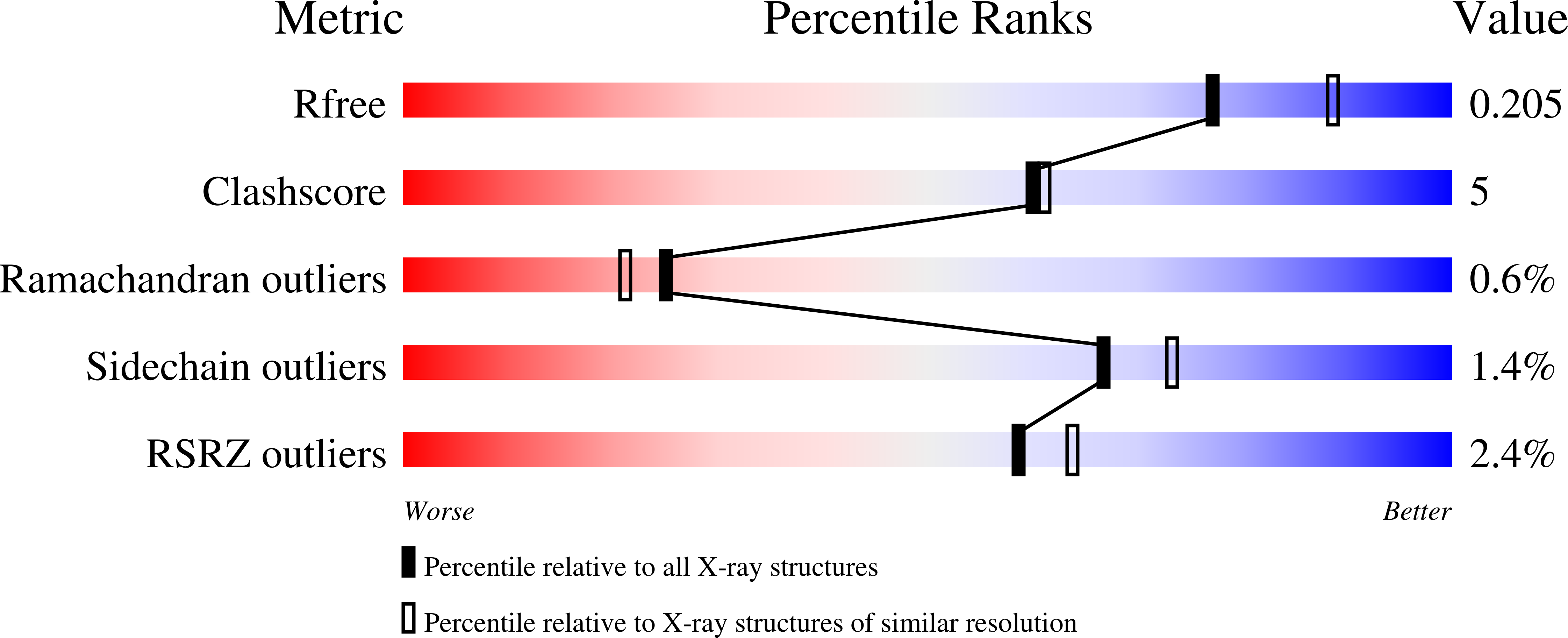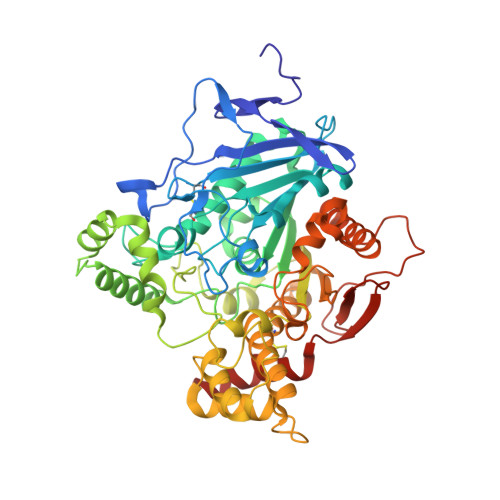Enzyme Dynamics Determine the Potency and Selectivity of Inhibitors Targeting Disease-Transmitting Mosquitoes.
Kumari, R., Lindgren, C., Kumar, R., Forsgren, N., Andersson, C.D., Ekstrom, F., Linusson, A.(2024) ACS Infect Dis 10: 3664-3680
- PubMed: 39291389
- DOI: https://doi.org/10.1021/acsinfecdis.4c00531
- Primary Citation of Related Structures:
8ORC - PubMed Abstract:
Vector control of mosquitoes with insecticides is an important tool for preventing the spread of mosquito-borne diseases including malaria, dengue, chikungunya, and Zika. Development of active ingredients for insecticides are urgently needed because existing agents exhibit off-target toxicity and are subject to increasing resistance. We therefore seek to develop noncovalent inhibitors of the validated insecticidal target acetylcholinesterase 1 (AChE1) from mosquitoes. Here we use molecular dynamics simulations to identify structural properties essential for the potency of reversible inhibitors targeting AChE1 from Anopheles gambiae ( Ag AChE1), the malaria-transmitting mosquito, and for selectivity relative to the vertebrate Mus musculus AChE ( m AChE). We show that the collective motions of apo Ag AChE1 and m AChE differ, with Ag AChE1 exhibiting less dynamic movement. Opening and closing of the gorge, which regulates access to the catalytic triad, is enabled by different mechanisms in the two species, which could be linked to their differing amino acid sequences. Inhibitor binding reduced the overall magnitude of dynamics of AChE. In particular, more potent inhibitors reduced the flexibility of the Ω loop at the entrance of the gorge. The selectivity of inhibitors for Ag AChE1 over m AChE derives from the positioning of the α-helix lining the binding gorge. Our findings emphasize the need to consider dynamics when developing inhibitors targeting this enzyme and highlight factors needed to create potent and selective Ag AChE1 inhibitors that could serve as active ingredients to combat disease-transmitting mosquitoes.
Organizational Affiliation:
Department of Chemistry, Umeå University, Umeå SE-90187, Sweden.



















